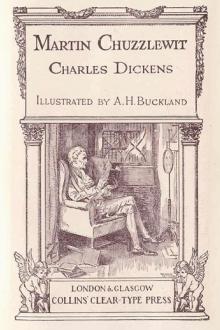Narrative of the Voyage of H.M.S. Rattlesnake, Commanded By the Late Captain Owe - Volume 1, John MacGillivray [read dune txt] 📗

- Author: John MacGillivray
Book online «Narrative of the Voyage of H.M.S. Rattlesnake, Commanded By the Late Captain Owe - Volume 1, John MacGillivray [read dune txt] 📗». Author John MacGillivray
extremely narrow, entirely lateral, and extending the whole length of the cell from the base of the avicularium.
Habitat: Bass Strait, 45 fathoms.
Colour yellowish white, growth small; parasitic upon C. amphora. As some difficulty might be experienced in the discrimination of this species from C. elegans, and another South African species (not the variety of C. elegans above noticed) it is requisite to remark that the long retrocedent spines when present are not placed upon or superadded to the avicularia, but that they seem to represent an aborted or transformed state of those organs. They vary much in length and size in different cells, and even in those of the same branch; as it frequently happens that there is a spine, usually of diminutive size, on one side and a very large avicularium on the other, and sometimes (but rarely) an avicularium of more moderate size on both sides. But the character of the species by which it is more particularly distinguished consists in the presence on a great many cells, in one part or other of the polyzoary, of the two large and strong spines projecting BACKWARDS. This retrocession of the spines is alone a sufficient character to distinguish the present species from the South African form above alluded to (C. taurina, B.) And the length and lateral position of the vittae would distinguish the unarmed cells from those of C. elegans.
12. C. umbonata, n. sp.
Cells more or less pyriform, alate, narrow below, bulging or ventricose upwards. Avicularia large and strong. Vittae strap-shaped, anterior, extending from the level of the mouth to the bottom of the cell, with elevated acuminate papillae or short spines. A broad compressed projecting process on the middle of the back.
Habitat: Bass Strait, 45 fathoms.
The cells in this species are small, inflated or ventricose, and as it were sub-globular above, becoming much attenuated below-but the cavity of the cell does not appear to extend into this contracted portion, in which is contained the connecting tube strengthened by calcareous matter-the inferior continuation of the lateral alae, which descend from the base of the avicularium. Owing to the large size of the avicularia, the upper part of the cell is much widened, and the whole acquires somewhat of a triangular form, and has a peculiar rugose aspect, derived, in part also, from the large size and elevation of the acuminated papillae, not only of the vittae but on the surface of the cell itself. The central umbo or crest posteriorly is a marked feature.
c. Without vittae or fenestrae.
13. C. carinata, n. sp.
Cells oval, narrowed at both ends; lateral processes (without avicularia ?) projecting horizontally upwards from the sides of the mouth about the middle of the cell. Mouth nearly central, with a small tooth on each side, and below it a triangular space with three strong conical eminences. The cell which bears the ovicell geminate.
Habitat: Bass Strait, 45 fathoms.
This remarkable form differs so widely in many respects from any of its congeners, as almost to deserve to be considered as the type of a distinct sub-genus. The lateral processes, which may be taken to represent the perfect avicularia of the other species, are, as far as can be ascertained from specimens that have been dried, without a movable mandible, and are probably really so, because there is no corresponding beak. These processes are channelled in front, nearly from the base to the extremity; they arise by a broad base on each side of the mouth, and on the front of the cell, and from the conjoined bases is continued upwards and downwards, or to the top and bottom of the cell, a prominent flattened band. The expanded bases circumscribe an oval space, nearly in the centre of the front of the cell, the upper two-thirds of which space are occupied by the circular mouth, on each side of which is a small calcareous tooth, to which apparently are articulated the horns of the semilunar lateral cartilage. The lower third is filled up by a yellow, horny (?) membrane, upon which are placed three conical eminences, disposed in a triangular manner. The back of the cell is very convex, and has running along the middle of it an elevated crest or keel, which is acuminate in the middle. The ovicell is situated in front of the cell below the mouth, and below it are three considerable-sized areolated spots, disposed, like the three conical spines, in a triangle. The cells upon which the ovicells are placed are always geminate, that is to say, have a smaller cell growing out from one side.
6. Calpidium, n. gen. Table 1 figures 3 to 5.
Character: Cells with an avicularium on each side; with two or three distinct mouths, arising one from the upper part of another, in a linear series, all facing the same way, and forming dichotomously-divided branches; cells at the bifurcation single; ovicells -- ?
This very peculiar genus, remarkable as it is, seems hitherto to have escaped notice. It is distinguishable from Catenicella, in the first place, by the anomalous circumstance that each cell is furnished with two or more, usually three, distinct keyhole-shaped mouths, and is doubtless inhabited by three distinct individuals. Whether these are separated from each other by internal partitions is unknown, but the closest examination of cells rendered transparent by means of acid fails to discover such. In cells thus prepared, there are apparent, however, three distinct masses, reaching from the bottom of the cell to each orifice, and which are probably the remains either of the body or of the retractor muscles of the animals. Another point of difference from Catenicella is the non-gemination of the cell at the dichotomy of a branch. The avicularia, moreover, do not form lateral projections, but are sessile, or imbedded, as it were, in the sides of the cell immediately below the upper angles.
1. C. ornatum, n. sp. Table 1 figures 3 to 5.
Cells triangular-urn shaped, very broad above, with a straight border, much compressed; mouths, 2 to 3, keyhole-shaped. Five fenestrae below each mouth; numerous branching bands on the back of the cell.
Habitat: Bass Strait, 45 fathoms.
This curious species is the only one belonging to the genus. The cells are very large, regular, and uniform, resembling very closely an antique sculptured urn. Colour dark brown, and the walls so thick as to be nearly opaque. The polyzoary, which appears to attain a height of four or five inches, is bipinnate (with all the branches on one plane) the branches alternate, and given off with extreme regularity. The ultimate ramules are incurved. The whole forms a very elegant object. The central stem, or series of cells, differs in no respect as regards the size or disposition of the cells composing it, from the branches.
Fam. 2. EUCRATIADAE.
7. EUCRATEA, Lamouroux.
1. Eucratea chelata, Lamouroux.
Habitat: Bass Strait, 45 fathoms.
In all respects identical with the British form. It also occurs at Port Adelaide.
8. ANGUINARIA, Lamarck.
1. A. spatulata, Lamarck.
Aetea anguina, Lamouroux.
Habitat: Bass Strait, and other localities.
This species (which appears to be pretty generally distributed over the globe) is identical with the European form. It is to be remarked, however, that a second species (A. dilatata, Busk. Annals of Natural History second series volume 7 page 81 plate 9 figure 14) is found in Torres Strait, but which does not occur in the Rattlesnake collection.
...
§ 2. MULTISERIALARIA. Cells disposed alternately in a double or multiple series.
1. Articulata.
Polyzoary divided into distinct internodes by flexible articulations.
a. Internodes elongated, or composed of numerous cells.
Fam. 1. SALICORNARIADAE. Cells disposed around an ideal axis.
9. SALICORNARIA, Cuvier.
a. Surface divided into more or less regular hexagonal spaces by elevated ridges.
1. S. punctata, n. sp.
Cellaria salicornioides ? Audoin. Savigny, Egypt. Plate 6 figure 7.
Hexagonal areas with an acute angle above and below; bottom of area pyriform, surface covered with minute transparent granulations. Mouth of cell in the upper third, with a minute tooth on each side.
Habitat: Bass Strait, 45 fathoms. Off Cumberland Islands, 27 fathoms, fine grey mud.
Parasitic upon Sertularians and Polyzoa; branches straggling of irregular lengths.
2. S. bicornis, n. sp.
Areas with an obtuse angle above and below, sometimes rounded above; a minute projection on each side near the top. Bottom of area long-oval, smooth, sometimes with a perforation above the mouth. Mouth with a minute tooth on each side.
Habitat: Bass Strait, 45 fathoms.
Parasitic. Branches shorter and thicker than in the preceding species. In the shape of the area they are very much alike, but in S. bicornis, in some cells, and occasionally throughout the greater part of the internode, the area differs widely from the more usual form. It is much expanded, and presents a wide arch above. In this case there is usually a considerable-sized perforation above the mouth of the cell, as occurs not infrequently also in S. farciminoides in the younger cells, and which opening is probably normal, until it becomes filled up by the gradual disposition of calcareous matter. What more especially distinguishes the present from the preceding species are the minute projections on either side at the two upper lateral angles of the hexagonal area, and the smoothness of the surface of the cell. They are both perfectly distinct from S. farciminoides.
b. Surface not divided into distinct areas by raised ridges.
3. S. furcata, n. sp.
Mouth of cell elliptical, occupying two-thirds of its length. Two small perforations on each side immediately above the mouth, protected by a convex transparent hood, which has a rounded opening on its under surface.
Habitat: Prince of Wales Channel, Torres Strait, nine fathoms.
Forms small crowded tufts from one to two or three inches high; branches very regularly dichotomous.
4. S. torresiana, n. sp.
Cell circumscribed by an acute raised border; opening oval, rather more than half the length of the cell. Cell attenuated below the opening.
Habitat: Prince of Wales Channel, Torres Strait, nine fathoms.
A small broken fragment only preserved; parasitic upon Sertularia mutulata, so that its habit cannot be satisfactorily determined. It is of a greenish colour, but this may be adventitious, although general and uniform throughout the specimen. This species differs from the above in being much larger, and in wanting the two perforations on each side above the mouth-in the less comparative size of the opening of the cell, and in the remarkable elevation of the sharp margin surrounding the upper half of the cell. In the looser aggregation, and in the form of the cells, it shows the transition from Salicornaria to Cellularia.
Fam. 2. CELLULARIADAE. Cells disposed in the same plane.
10. CELLULARIA, Pallas.
Character: (B.) Cells bi-triserial, oblong* or rhomboidal, contiguous. Opening of cell occupying at least half of the front. Margin thickened, sometimes spinous above. A short spine or a sessile avicularium on the upper and outer angle.
(*Footnote. This shape of the cells is given from the back view of them.)
A. inarmatae-without avicularium.
1. C. monotrypa, n. sp.
Cells oblong, narrowed below, with a single perforation, in the upper and outer part behind. Opening oval, margin smooth; a short spinous process at the upper and outer angle; a sharp short spine in the middle of the upper border of the middle cell, at a bifurcation. Ovicell ? in form of a very shallow excavation in the upper part of the cell in front.
Habitat: Bass Strait, 45 fathoms.
The only species with which this can be confounded, is C. peachii (Busk. Annals of
Habitat: Bass Strait, 45 fathoms.
Colour yellowish white, growth small; parasitic upon C. amphora. As some difficulty might be experienced in the discrimination of this species from C. elegans, and another South African species (not the variety of C. elegans above noticed) it is requisite to remark that the long retrocedent spines when present are not placed upon or superadded to the avicularia, but that they seem to represent an aborted or transformed state of those organs. They vary much in length and size in different cells, and even in those of the same branch; as it frequently happens that there is a spine, usually of diminutive size, on one side and a very large avicularium on the other, and sometimes (but rarely) an avicularium of more moderate size on both sides. But the character of the species by which it is more particularly distinguished consists in the presence on a great many cells, in one part or other of the polyzoary, of the two large and strong spines projecting BACKWARDS. This retrocession of the spines is alone a sufficient character to distinguish the present species from the South African form above alluded to (C. taurina, B.) And the length and lateral position of the vittae would distinguish the unarmed cells from those of C. elegans.
12. C. umbonata, n. sp.
Cells more or less pyriform, alate, narrow below, bulging or ventricose upwards. Avicularia large and strong. Vittae strap-shaped, anterior, extending from the level of the mouth to the bottom of the cell, with elevated acuminate papillae or short spines. A broad compressed projecting process on the middle of the back.
Habitat: Bass Strait, 45 fathoms.
The cells in this species are small, inflated or ventricose, and as it were sub-globular above, becoming much attenuated below-but the cavity of the cell does not appear to extend into this contracted portion, in which is contained the connecting tube strengthened by calcareous matter-the inferior continuation of the lateral alae, which descend from the base of the avicularium. Owing to the large size of the avicularia, the upper part of the cell is much widened, and the whole acquires somewhat of a triangular form, and has a peculiar rugose aspect, derived, in part also, from the large size and elevation of the acuminated papillae, not only of the vittae but on the surface of the cell itself. The central umbo or crest posteriorly is a marked feature.
c. Without vittae or fenestrae.
13. C. carinata, n. sp.
Cells oval, narrowed at both ends; lateral processes (without avicularia ?) projecting horizontally upwards from the sides of the mouth about the middle of the cell. Mouth nearly central, with a small tooth on each side, and below it a triangular space with three strong conical eminences. The cell which bears the ovicell geminate.
Habitat: Bass Strait, 45 fathoms.
This remarkable form differs so widely in many respects from any of its congeners, as almost to deserve to be considered as the type of a distinct sub-genus. The lateral processes, which may be taken to represent the perfect avicularia of the other species, are, as far as can be ascertained from specimens that have been dried, without a movable mandible, and are probably really so, because there is no corresponding beak. These processes are channelled in front, nearly from the base to the extremity; they arise by a broad base on each side of the mouth, and on the front of the cell, and from the conjoined bases is continued upwards and downwards, or to the top and bottom of the cell, a prominent flattened band. The expanded bases circumscribe an oval space, nearly in the centre of the front of the cell, the upper two-thirds of which space are occupied by the circular mouth, on each side of which is a small calcareous tooth, to which apparently are articulated the horns of the semilunar lateral cartilage. The lower third is filled up by a yellow, horny (?) membrane, upon which are placed three conical eminences, disposed in a triangular manner. The back of the cell is very convex, and has running along the middle of it an elevated crest or keel, which is acuminate in the middle. The ovicell is situated in front of the cell below the mouth, and below it are three considerable-sized areolated spots, disposed, like the three conical spines, in a triangle. The cells upon which the ovicells are placed are always geminate, that is to say, have a smaller cell growing out from one side.
6. Calpidium, n. gen. Table 1 figures 3 to 5.
Character: Cells with an avicularium on each side; with two or three distinct mouths, arising one from the upper part of another, in a linear series, all facing the same way, and forming dichotomously-divided branches; cells at the bifurcation single; ovicells -- ?
This very peculiar genus, remarkable as it is, seems hitherto to have escaped notice. It is distinguishable from Catenicella, in the first place, by the anomalous circumstance that each cell is furnished with two or more, usually three, distinct keyhole-shaped mouths, and is doubtless inhabited by three distinct individuals. Whether these are separated from each other by internal partitions is unknown, but the closest examination of cells rendered transparent by means of acid fails to discover such. In cells thus prepared, there are apparent, however, three distinct masses, reaching from the bottom of the cell to each orifice, and which are probably the remains either of the body or of the retractor muscles of the animals. Another point of difference from Catenicella is the non-gemination of the cell at the dichotomy of a branch. The avicularia, moreover, do not form lateral projections, but are sessile, or imbedded, as it were, in the sides of the cell immediately below the upper angles.
1. C. ornatum, n. sp. Table 1 figures 3 to 5.
Cells triangular-urn shaped, very broad above, with a straight border, much compressed; mouths, 2 to 3, keyhole-shaped. Five fenestrae below each mouth; numerous branching bands on the back of the cell.
Habitat: Bass Strait, 45 fathoms.
This curious species is the only one belonging to the genus. The cells are very large, regular, and uniform, resembling very closely an antique sculptured urn. Colour dark brown, and the walls so thick as to be nearly opaque. The polyzoary, which appears to attain a height of four or five inches, is bipinnate (with all the branches on one plane) the branches alternate, and given off with extreme regularity. The ultimate ramules are incurved. The whole forms a very elegant object. The central stem, or series of cells, differs in no respect as regards the size or disposition of the cells composing it, from the branches.
Fam. 2. EUCRATIADAE.
7. EUCRATEA, Lamouroux.
1. Eucratea chelata, Lamouroux.
Habitat: Bass Strait, 45 fathoms.
In all respects identical with the British form. It also occurs at Port Adelaide.
8. ANGUINARIA, Lamarck.
1. A. spatulata, Lamarck.
Aetea anguina, Lamouroux.
Habitat: Bass Strait, and other localities.
This species (which appears to be pretty generally distributed over the globe) is identical with the European form. It is to be remarked, however, that a second species (A. dilatata, Busk. Annals of Natural History second series volume 7 page 81 plate 9 figure 14) is found in Torres Strait, but which does not occur in the Rattlesnake collection.
...
§ 2. MULTISERIALARIA. Cells disposed alternately in a double or multiple series.
1. Articulata.
Polyzoary divided into distinct internodes by flexible articulations.
a. Internodes elongated, or composed of numerous cells.
Fam. 1. SALICORNARIADAE. Cells disposed around an ideal axis.
9. SALICORNARIA, Cuvier.
a. Surface divided into more or less regular hexagonal spaces by elevated ridges.
1. S. punctata, n. sp.
Cellaria salicornioides ? Audoin. Savigny, Egypt. Plate 6 figure 7.
Hexagonal areas with an acute angle above and below; bottom of area pyriform, surface covered with minute transparent granulations. Mouth of cell in the upper third, with a minute tooth on each side.
Habitat: Bass Strait, 45 fathoms. Off Cumberland Islands, 27 fathoms, fine grey mud.
Parasitic upon Sertularians and Polyzoa; branches straggling of irregular lengths.
2. S. bicornis, n. sp.
Areas with an obtuse angle above and below, sometimes rounded above; a minute projection on each side near the top. Bottom of area long-oval, smooth, sometimes with a perforation above the mouth. Mouth with a minute tooth on each side.
Habitat: Bass Strait, 45 fathoms.
Parasitic. Branches shorter and thicker than in the preceding species. In the shape of the area they are very much alike, but in S. bicornis, in some cells, and occasionally throughout the greater part of the internode, the area differs widely from the more usual form. It is much expanded, and presents a wide arch above. In this case there is usually a considerable-sized perforation above the mouth of the cell, as occurs not infrequently also in S. farciminoides in the younger cells, and which opening is probably normal, until it becomes filled up by the gradual disposition of calcareous matter. What more especially distinguishes the present from the preceding species are the minute projections on either side at the two upper lateral angles of the hexagonal area, and the smoothness of the surface of the cell. They are both perfectly distinct from S. farciminoides.
b. Surface not divided into distinct areas by raised ridges.
3. S. furcata, n. sp.
Mouth of cell elliptical, occupying two-thirds of its length. Two small perforations on each side immediately above the mouth, protected by a convex transparent hood, which has a rounded opening on its under surface.
Habitat: Prince of Wales Channel, Torres Strait, nine fathoms.
Forms small crowded tufts from one to two or three inches high; branches very regularly dichotomous.
4. S. torresiana, n. sp.
Cell circumscribed by an acute raised border; opening oval, rather more than half the length of the cell. Cell attenuated below the opening.
Habitat: Prince of Wales Channel, Torres Strait, nine fathoms.
A small broken fragment only preserved; parasitic upon Sertularia mutulata, so that its habit cannot be satisfactorily determined. It is of a greenish colour, but this may be adventitious, although general and uniform throughout the specimen. This species differs from the above in being much larger, and in wanting the two perforations on each side above the mouth-in the less comparative size of the opening of the cell, and in the remarkable elevation of the sharp margin surrounding the upper half of the cell. In the looser aggregation, and in the form of the cells, it shows the transition from Salicornaria to Cellularia.
Fam. 2. CELLULARIADAE. Cells disposed in the same plane.
10. CELLULARIA, Pallas.
Character: (B.) Cells bi-triserial, oblong* or rhomboidal, contiguous. Opening of cell occupying at least half of the front. Margin thickened, sometimes spinous above. A short spine or a sessile avicularium on the upper and outer angle.
(*Footnote. This shape of the cells is given from the back view of them.)
A. inarmatae-without avicularium.
1. C. monotrypa, n. sp.
Cells oblong, narrowed below, with a single perforation, in the upper and outer part behind. Opening oval, margin smooth; a short spinous process at the upper and outer angle; a sharp short spine in the middle of the upper border of the middle cell, at a bifurcation. Ovicell ? in form of a very shallow excavation in the upper part of the cell in front.
Habitat: Bass Strait, 45 fathoms.
The only species with which this can be confounded, is C. peachii (Busk. Annals of
Free e-book «Narrative of the Voyage of H.M.S. Rattlesnake, Commanded By the Late Captain Owe - Volume 1, John MacGillivray [read dune txt] 📗» - read online now
Similar e-books:





Comments (0)